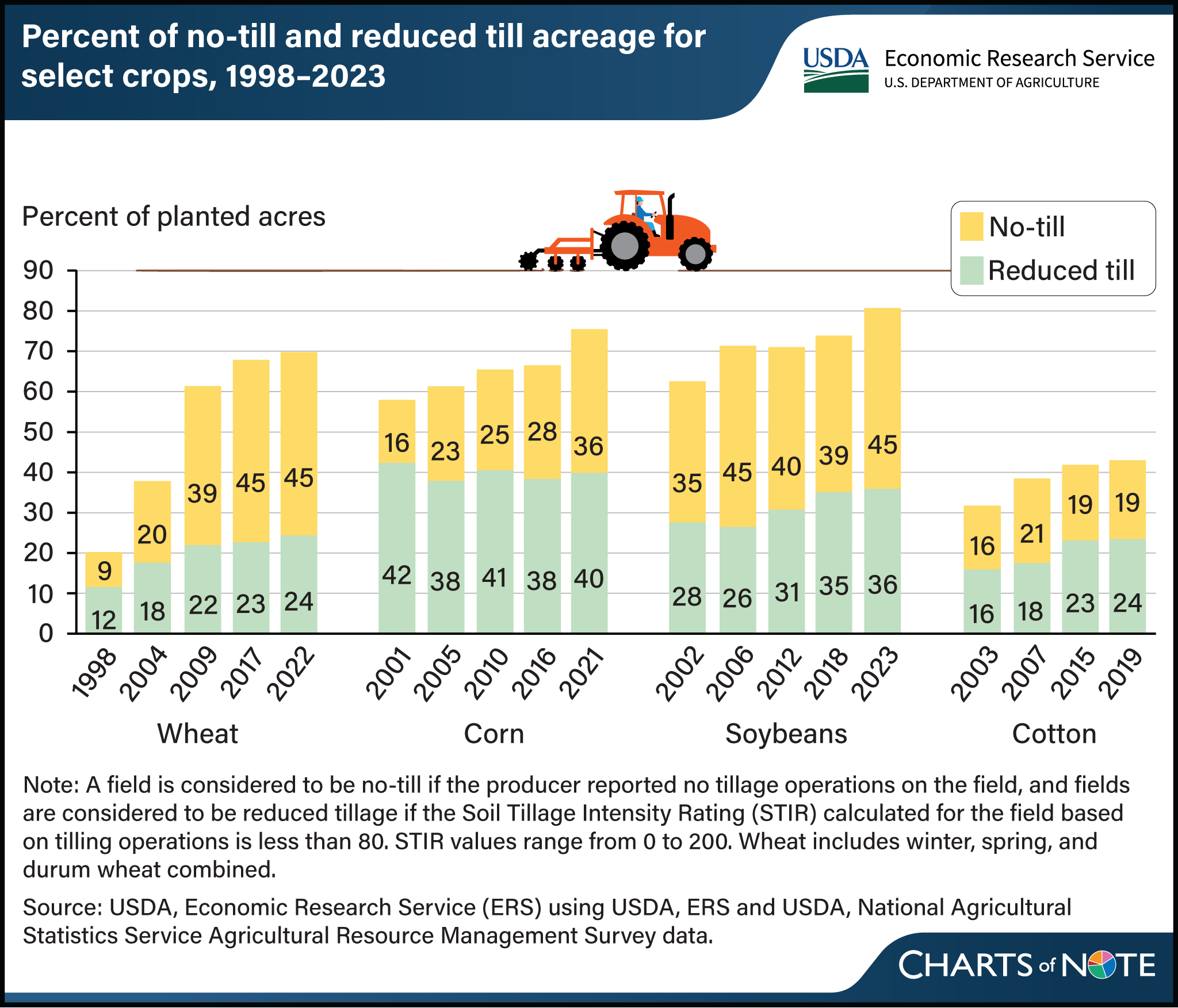Percent of no-till plus reduced till acres planted to major U.S. commodities have increased, 1998–2023
- by Maria Bowman and Andrew B. Rosenberg
- 7/8/2025

The share of acreage for major U.S. crops—wheat, corn, soybeans, and cotton—managed using no-till and reduced till practices has increased over time. Survey responses from farmers show that no-till (a conservation practice in which crops are planted directly into undisturbed soil, without prior tilling or soil preparation) and reduced till (which minimizes soil disturbance caused by tillage) increased the most for wheat compared with corn, soybeans, and cotton. The share of wheat acreage under no-till and reduced till combined increased from 21 percent in 1998 to 69 percent in 2022. Survey data also show that the share of acreage under no-till increased each survey year for corn but shares have leveled off for cotton and wheat and have been variable for soybeans. The introduction of herbicide-tolerant field crops initially contributed to no-till adoption (since weeds could be controlled using herbicides instead of tillage). However, the increased prevalence of herbicide-resistant weeds, such as water hemp, giant ragweed, and palmer amaranth, has been one factor contributing to tillage decisions for these crops over time. This chart and other analysis can be found in the USDA, Economic Research Service report Economic Outcomes of Soil Health and Conservation Practices on U.S. Cropland, published in June 2025.

